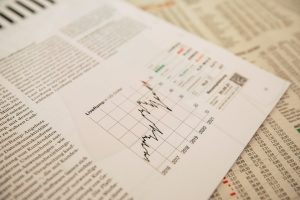Turnover in forex refers to the total value of all trades carried out within a specified time frame. It is a measure of the overall activity in the foreign exchange market and is often used as an indicator of market liquidity. In this article, we’ll explore what turnover in forex means, how it’s calculated, and why it’s important.
What is Turnover in Forex?
The forex market is the largest financial market in the world, with over $5 trillion traded every day. The turnover in forex refers to the total value of all currency transactions that take place within a certain period. This includes spot transactions, forwards, swaps, and options.
Turnover is a crucial metric in the forex market, as it indicates the level of liquidity and activity in the market. High turnover means that there is a lot of trading activity, which can lead to tighter spreads and more efficient pricing. Low turnover, on the other hand, can indicate a lack of interest in the market or a lack of available liquidity.
How is Forex Turnover Calculated?
Forex turnover is calculated by adding up the total value of all currency transactions that take place within a specific period. The most common period used for calculating turnover is daily, but it can also be calculated on a weekly, monthly, or annual basis.
To calculate the daily forex turnover, you need to add up the value of all trades that took place over a 24-hour period. This includes all spot transactions, forwards, swaps, and options. The total value of these transactions is then divided by the number of trading days in the period to get the average daily turnover.
For example, if the total value of all currency transactions that took place in a week was $100 trillion, and there were five trading days in that week, the average daily turnover would be $20 trillion ($100 trillion / 5 trading days).
Why is Forex Turnover Important?
Forex turnover is an important metric for several reasons. Firstly, it is an indicator of market liquidity. High turnover means that there is a lot of trading activity, which can lead to tighter spreads and more efficient pricing. This is particularly important for traders who rely on tight spreads to make profits.
Secondly, turnover can provide insights into market trends and shifts in sentiment. For example, if there is a sudden increase in turnover, it could indicate a shift in market sentiment or a change in economic conditions. Traders can use this information to make more informed trading decisions.
Finally, turnover is important for regulators and policymakers who need to monitor and regulate the forex market. Regulators use turnover data to assess market risk and identify potential issues that could impact market stability.
Conclusion
In summary, forex turnover refers to the total value of all currency transactions that take place within a specified period. It is a crucial metric for traders, regulators, and policymakers, as it provides insights into market liquidity, trends, and potential risks. By understanding what turnover in forex means and how it’s calculated, traders can make more informed trading decisions and regulators can better monitor and regulate the market.





